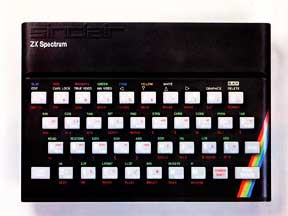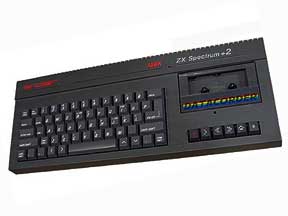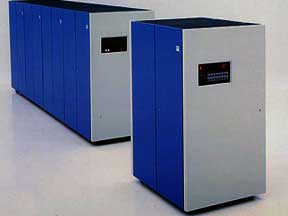Hard Drive Devices & Hard Disk Technology
Hard Drive Technology – Hard Drive Devices
 Seagate Hard Drives have led the way with regard to hard disk technology, from the 80’s with the ST-506 & a mere 5mb capacity, to a 1.5 terabyte drive in 2008. Other hard drive devices produced by manufacturers such as Hitachi, Western Digital & Toshiba, have also left their mark on current hard drive technology.
Seagate Hard Drives have led the way with regard to hard disk technology, from the 80’s with the ST-506 & a mere 5mb capacity, to a 1.5 terabyte drive in 2008. Other hard drive devices produced by manufacturers such as Hitachi, Western Digital & Toshiba, have also left their mark on current hard drive technology.
Is it just me, or is everyone aware of the astonishing rate at which computer technology is advancing..? I remember my first ever home computer in the 80’s, a Sinclair Specrtrum 48k, yeah you may well chuckle hahaha 48 kilobytes awesome stuff eh..? Needless to say I soon moved onto bigger & better things, 1st came a Sinclair Spectrum +2 128k closely followed by a proper home computer running Windows 98 SE on a 1.2 gb hard drive…. What..? your still chuckling ! ;-)


Ok well yes you may well chuckle at the feeble power of yesteryear’s computers, but this is the whole point, we as a generation are witnessing such advancements with technology it is really mind boggling! Our Grandparents witnessed the arrival of the age of steam & just look how that changed travel & industry. Now we witness the age of computers & it has been said that due to the awesome processing powers of some of the Super Computers like Cray & Kraken, that we are in real danger of failing to keep pace with this technology
Hard disk drives were not commonly used with microcomputers until after 1980, when Seagate Technology introduced the ST-506, the first 5.25″ computers hard drives, with a formatted capacity of 5 megabytes. Since then hard disk technology has leaped forward with what seems like miracle advancements in computer hard drives. Seagate drives still being held in very high regard by many home computer users.
Modern Day Hard Drives
Most common hard drives available in todays market place are the 5400 rpm ATA and 7200 rpm SATA drives. What is the difference between these two, apart from the speed that the disc is able to spin at, which obviously means improved access times. An ATA drive has a maximum transfer rate of around 133Mbs whereas a SATA drive has a typical transfer rate of around 150Mbs & a SATA II drive around 300Mbs.
It is often rumoured around the Internet that there is not much difference in performance between these hard drives & it has to be said that much of this ill informed rumouring is brought about by users failing to realise that, in order to get peak performance from a SATA or SATA II drive, the rest of your system needs to be upgraded to match the potential transfer rates of these drives. This is exactly the same with USB1 & USB2, plug a USB2 device into a USB1 port and you will struggle to see any transfer rate increase. Put simply, if your CPU or PC memory cannot cope with data transfers of around 150Mbs – 300Mbs, then I would stick with an ATA drive as any performance increase is going to be negligible.
In a properly balanced system the improvements in performance are very evident, such as less than 18 second boot time, less than 10 second shut down and instant image, mp3 & video access times. However there is a price to pay for this higher performance & that comes in a shorter life expectancy for your hard drive due to faster moving parts! The new SSD (Solid State Drives) will alleviate this problem because they have no moving parts or mechanism that can be thrown out of balance & damaged through excessive shock or mishandling.
Let’s Do Some Quick Calculations
Just consider this for a moment, there are 8 bits to a byte, if you put 1,024 bytes together, you get a kilobyte. Take the same amount of kilobytes (1,024) and you now have a megabyte; 1,024 megabytes and you have a gigabyte – and so on to get a terabyte, and finally, a petabyte. So how many bits are in a petabyte..? A staggering 9,007,199,254,740,990 ?
Hard Drive Capacity
 The capacity of hard drives has grown exponentially over time. With early personal computers, a drive with a 20 MB capacity was considered large. During the early 1990s the typical hard disk drive for a PC had a capacity of around 1 GB. As of early 2009, desktop hard disk drives typically have a capacity of 320 to 500 gigabytes, whilst the largest-capacity drives are now a whopping 2 terabytes.
The capacity of hard drives has grown exponentially over time. With early personal computers, a drive with a 20 MB capacity was considered large. During the early 1990s the typical hard disk drive for a PC had a capacity of around 1 GB. As of early 2009, desktop hard disk drives typically have a capacity of 320 to 500 gigabytes, whilst the largest-capacity drives are now a whopping 2 terabytes.
For the average person, this sort of number crunching is beyond comprehension when dealing with such large storage capacities as the petabyte, but it doesn’t stop there. Beyond the petabyte are the exabyte, zettabyte and yottabyte. While some may still be getting used to the idea that 1,024 megabytes equals one gigabyte, we’re fast coming upon the time when people will be referring to having “half a terabyte” storage, rather than 500 gigabytes.
Hard Drive History 1980’s To Present Day
The IBM – 3380 Storage Device
 • 1980 – The world’s first gigabyte-capacity disk drive, the IBM 3380, was the size of a refrigerator, weighed 550 pounds (about 250 kg), and had a price tag of $40,000
• 1980 – The world’s first gigabyte-capacity disk drive, the IBM 3380, was the size of a refrigerator, weighed 550 pounds (about 250 kg), and had a price tag of $40,000
• 1986 – Standardization of SCSI
• 1989– Jimmy Zhu and H. Neal Bertram from UCSD proposed exchange decoupled granular microstructure for thin film disk storage media, still used today.
• 1991 – 2.5-inch 100 megabyte hard drive
• 1991 – PRML Technology (Digital Read Channel with ‘Partial Response Maximum Likelihood’ algorithm)
• 1992– first 1.3-inch hard disk drive – HP Kittyhawk
• 1994 – IBM introduces Laser Textured Landing Zones (LZT)
• 1996 – IBM introduces GMR (Giant MR) Technology for read sensors
• 1998– UltraDMA/33 and ATAPI standardized
• 1999– IBM releases the Microdrive in 170 MB and 340 MB capacities
• 2002 – 137 GB addressing space barrier broken
• 2003 – Serial ATA introduced
• 2005 – First 500 GB hard drive shipping (Hitachi GST)
• 2005 – Serial ATA 3Gbps standardized
• 2005– Seagate introduces Tunnel MagnetoResistive Read Sensor (TMR) and Thermal Spacing Control
• 2005 – Introduction of faster SAS (Serial Attached SCSI)
• 2005 – First Perpendicular recording HDD shipped: Toshiba 1.8-inch 40/80 GB
• 2006– First 750 GB hard drive (Seagate)
• 2006 – First 200 GB 2.5″ hard drive utilizing Perpendicular recording (Toshiba)
• 2006– Fujitsu develops heat-assisted magnetic recording (HAMR) that could one day achieve one terabit per square inch densities.
• 2007 – First 1 terabyte hard drive (Hitachi GST)
• 2008– First 1.5 terabyte hard drive (Seagate)
• 2009 – First 2.0 terabyte hard drive (Western Digital)
Predictions for the near future:
• 2010 – 2.5 & 5-platter 3TB Hard drives expected, manufacturer claims by TDK and Western Digital
• 2011 – 4TB Hard drives expected, Hitachi claim
These advancement in hard drive devices & hard drive technology, plus the processing power of the latest CPUs, will over a relatively short period of time, ultimately accelerate & change the evolution of man. Never before has such awesome computing power been available to mankind & it only remain to be seen, to what use man eventually puts this new found technology. Who can even comprehend of what the next 30 years will bring to our lives..?
2 Comments Already
Leave a Reply
You must be logged in to post a comment.
Wow, this is an extensive history of Hard Drive. My my we have moved on a lot from the times of Big Boxy types of storage devices. I wonder how people would have fitted that kind of things in their rooms
While solid state hard drives do not suffer from mechanical failure, they have a shorter lifespan than mechanical drives. The number of times flash media can be overwritten is the limiting factor here. Until technology improves, you are simply trading one set of problems for another.